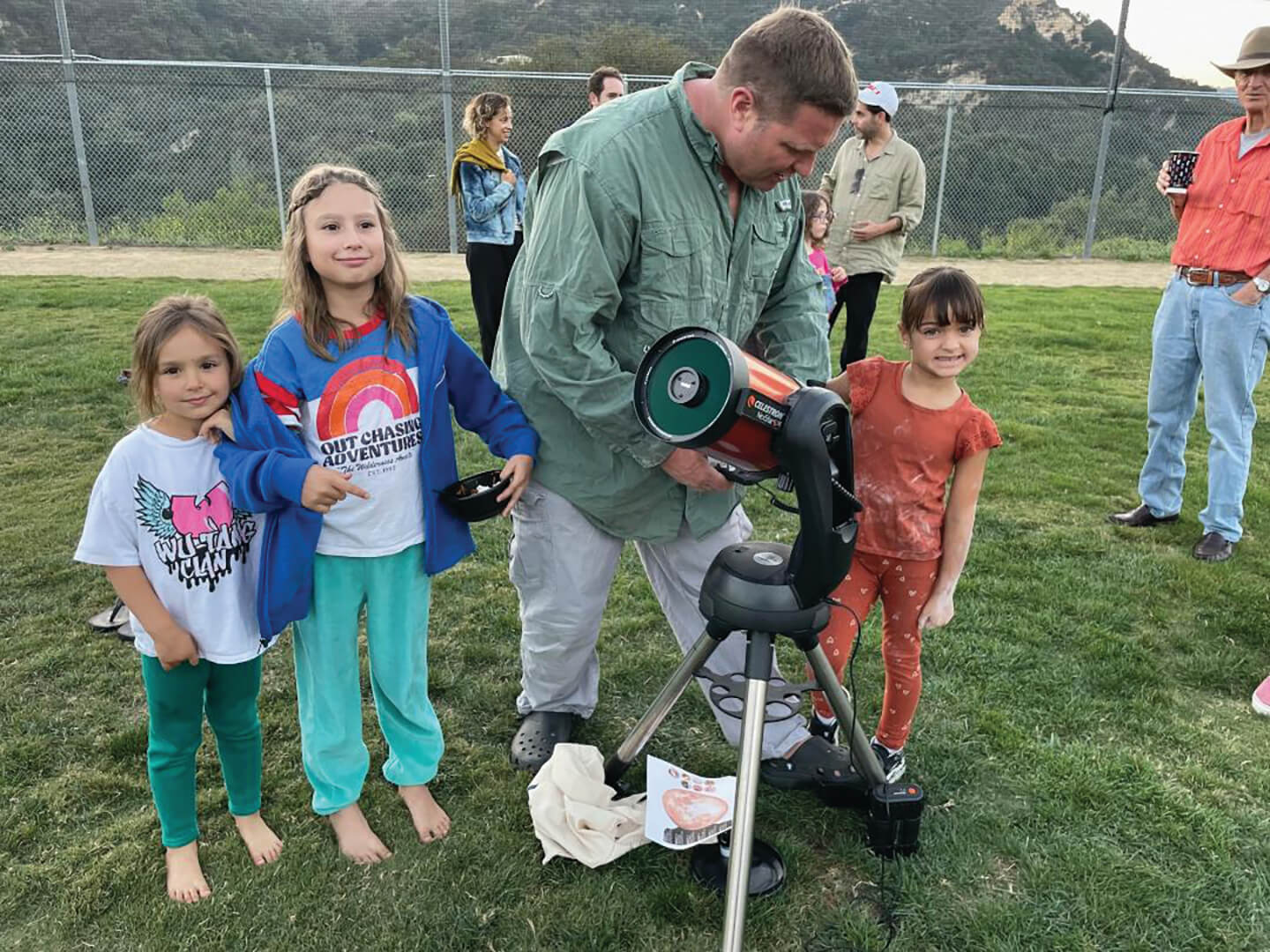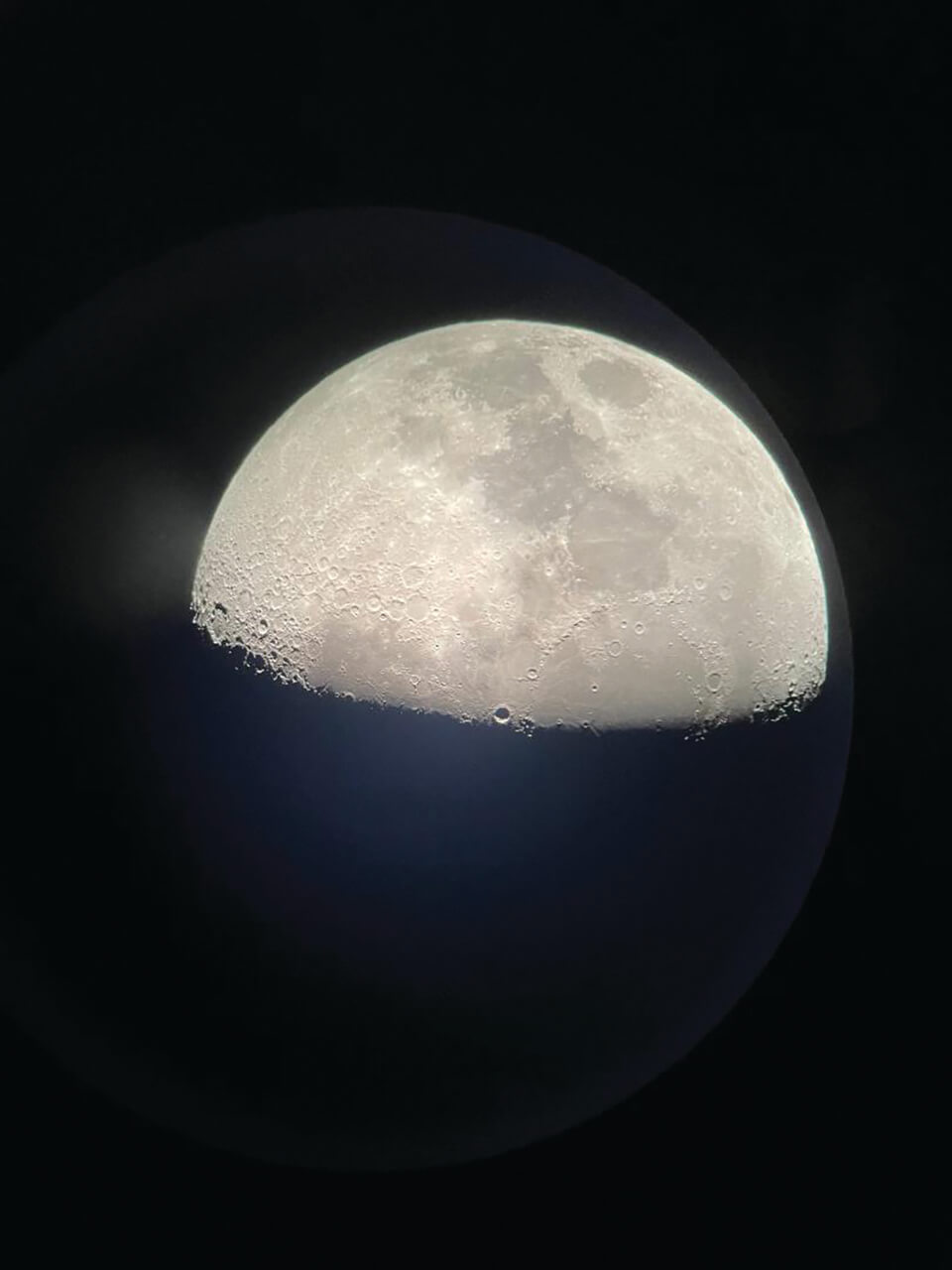Oh, Pioneers!October 13, 2023
On Sunday evening, Sept. 24, family members of the Topanga Elementary TK class set up some very fine telescopes on the ball field at the Community House. My son, Ben LaBrot, was manning a scope aimed at the moon. It is such a thrill to lay your eye over a viewfinder and, suddenly, see the craters and ridges of the moon three dimensionally. And… it is always a thrill to see, among the beautiful children, the ones that don’t just peek and run, but the ones that stand riveted and enchanted as they fall in love with space.
The National Space Society (NSS) believes the future of humanity lies in space. Space holds virtually limitless amounts of energy and raw materials, from Helium-3 fuel on the Moon for clean fusion reactors, to heavy metals and volatile gases from the asteroids, which can be harvested for use on Earth and in space. The vision of the NSS is “people living and working in thriving communities beyond the Earth and the use of the vast resources of space for the dramatic betterment of humanity.” Their mission is “to expand civilization beyond Earth, to settle space and to use the resulting resources to build a hopeful and prosperous future for humanity.”
A Little History
The idea of colonizing space has been around since man first started contemplating the stars. While teaching physics at Princeton, Gerard O’Neill, became interested in the possibility that humans could survive and live in outer space. He researched and proposed a futuristic idea for human settlement in space, the O’Neill Cylinder, in “The Colonization of Space,” his first paper on the subject. He formed a group called L5 and held a conference on space manufacturing at Princeton in 1975.
At the same time, the National Space Institute was a space advocacy group established by Dr. Wernher von Braun to help maintain the public’s support for the United States space program. The two groups merged to later become the National Space Society. This is a citizen-supported group with members that have included scientists and celebrities, including John Denver, Jacques Cousteau, Dr. Michael DeBakey, Bob Hope, Gene Rodenberry (Star Trek originator) and astronauts like Buzz Aldrin, Frank Borman and John Glenn.
Have their dreams come true? Just a few days ago, on Sept. 26, American astronaut Frank Rubio and two Russian cosmonauts returned to Earth after living for a year in space at the International Space Station. You can’t say there hasn’t been progress on the idea of colonizing space! Baby steps, but real steps, my friends!
From Low Earth Orbit To Beyond
Dale Skran, VP of the NSS. writes, “Space itself teems with valuable resources, including continuous and abundant solar energy and mineral wealth on a scale beyond imagination just in the near Earth asteroids…. The US Congress has laid the legal groundwork for asteroid and lunar mining with the passage of the Commercial Space Launch Competitiveness Act, signed by President Obama on November 23, 2015…. Leadership at Google, Larry Page and Eric Schmidt, are investors in the asteroid mining firm Planetary Resources.” Can you believe while you are trying to put dinner on the table for your families all this is going on? Left: Topanga Elementary School night sky gazing on the ball field at the Community House
Above: The craters and ridges of the moon in 3-D! |
 The ”Roadmap”
The NSS has a list of milestones for the colonization of space. The first milestone is continuous occupancy in low Earth orbit, which we seem to have achieved to some extent in the International Space Station!
Milestone two is higher commercial launch rates and lower cost to orbit, also well underway as billionaires unfold their space programs, developing more efficient and reliable vehicles with faster turnaround times and re-usable vehicles.
Milestone three is the creation of transportation systems and infrastructure in “cislunar space,” i.e., the space between the Earth and the Moon, resulting in regular commerce in cislunar space.
Milestone four is legal protection of property rights enacted to provide prospective off-Earth investors and settlers with the security to take financial risks.
Milestone five involves economic incentives, such as “land grants,” to encourage private investment in off-Earth settlements. (remember the Homestead Act?)
Milestone six is people leaving Earth with the technology and tools needed to settle, survive and prosper without needing constant resupply from Earth.
The idea of space settlement starts from low Earth orbit, goes to the moon, to asteroids, to mars and on to the stars. Seems farfetched? Remember, humans emerged from one place, Africa. Look at us now.
It’s On!
We’re already on milestone three. We are so “on,” in fact, that the FCC has started regulating the problem of “space debris” caused by all the satellites and hardware launched into space. The Dish Network just got fined $150,000 for failing to properly dispose of their EchoStar-7 broadcast communications satellite. We already have a space pollution problem!
The NSS believes it is human destiny to escape the cradle of our planet of birth. Their goal is people living and working in thriving communities beyond the Earth and the use of the vast resources of space for the dramatic betterment of humanity. The rocket has left the launch pad!
Will one of those little TK kids be looking through a telescope back at Earth from a settlement far, far away one day?
Vamos a ver!  | | | | | | | | | | | | | | |
|
|
|
|
|
|
|
 |
|
|
|
| | |
|
|










